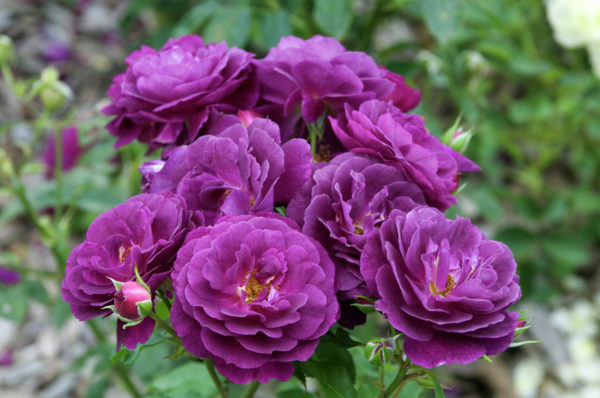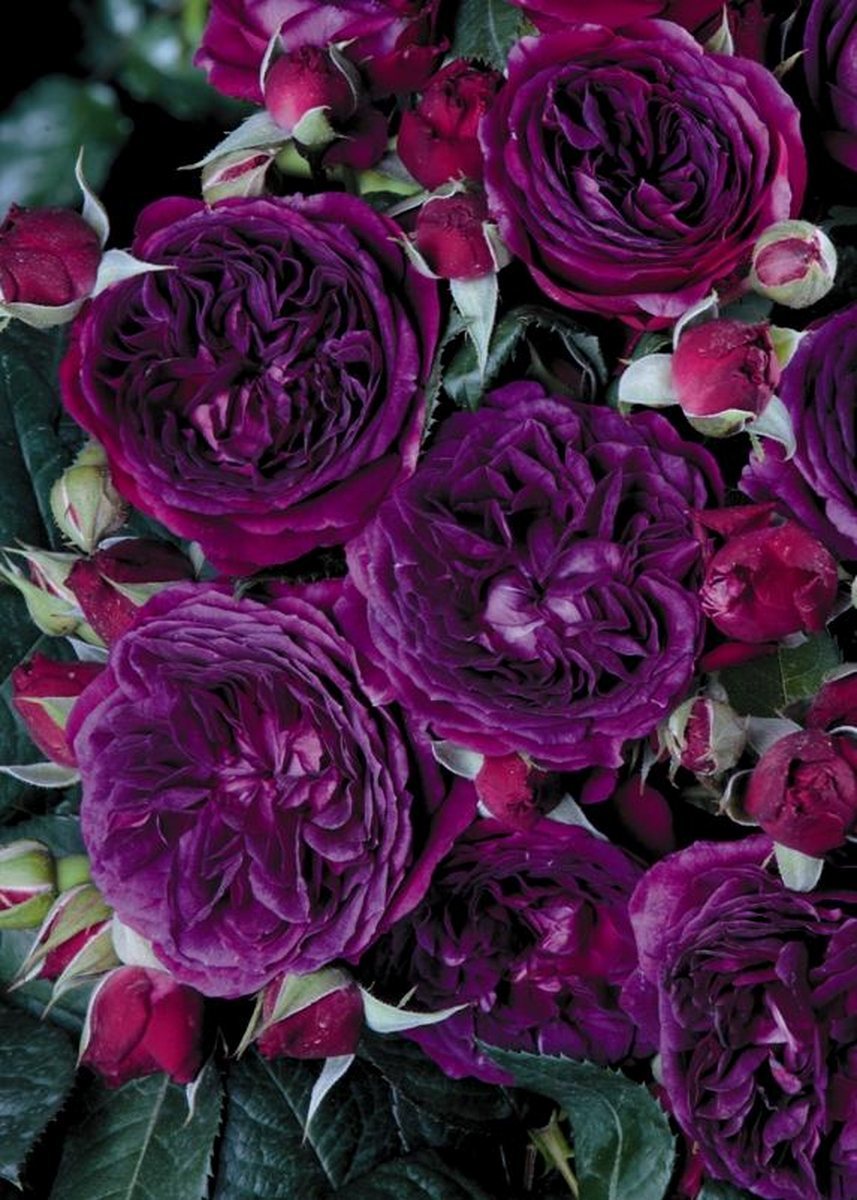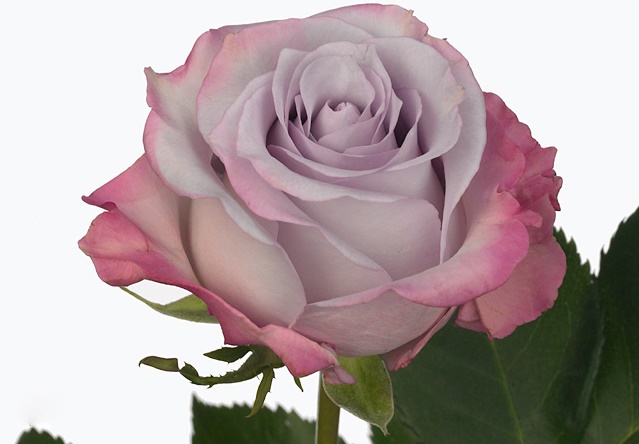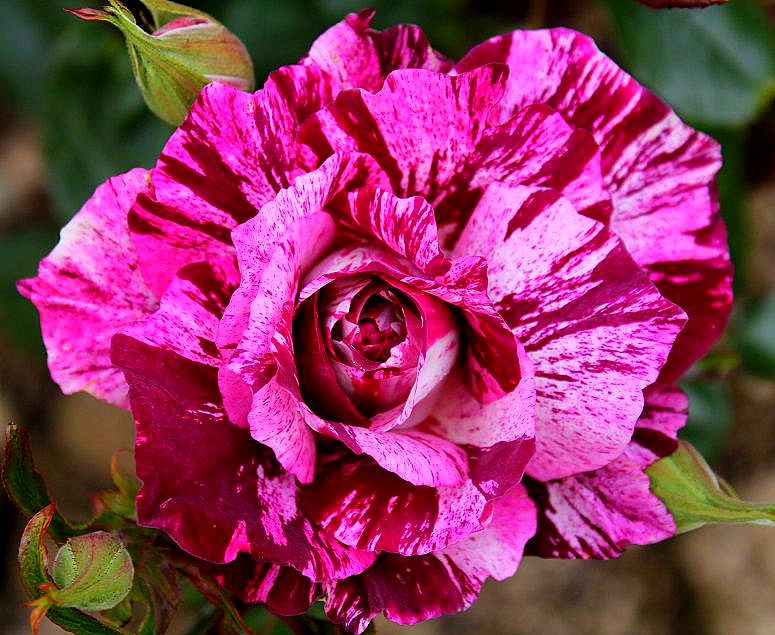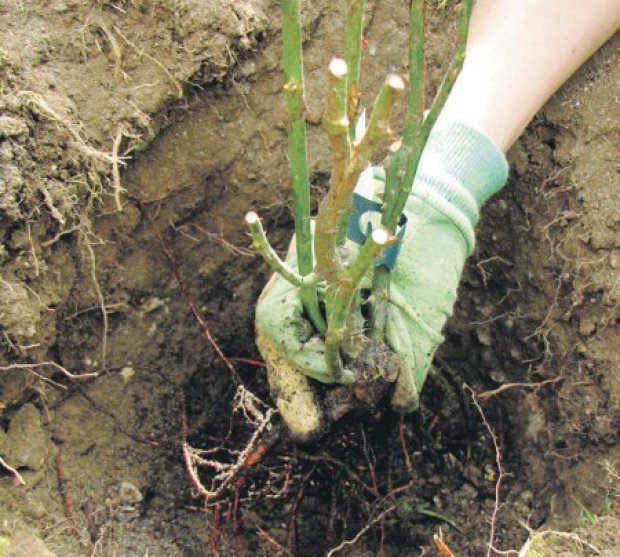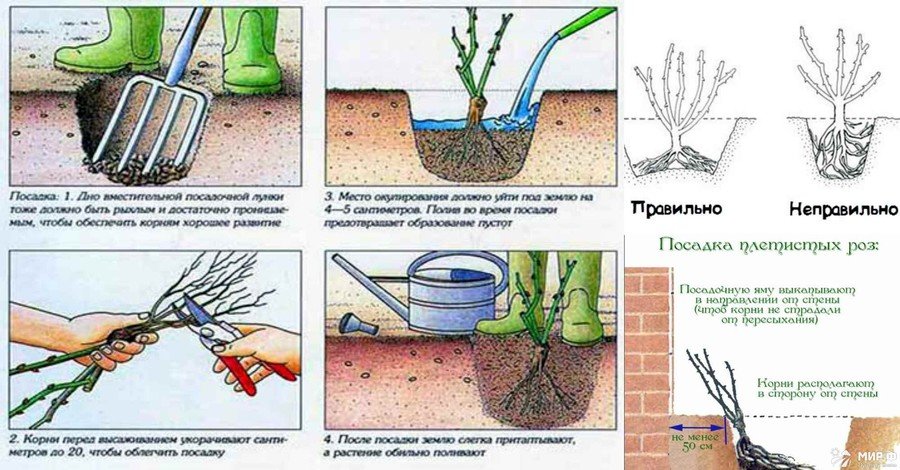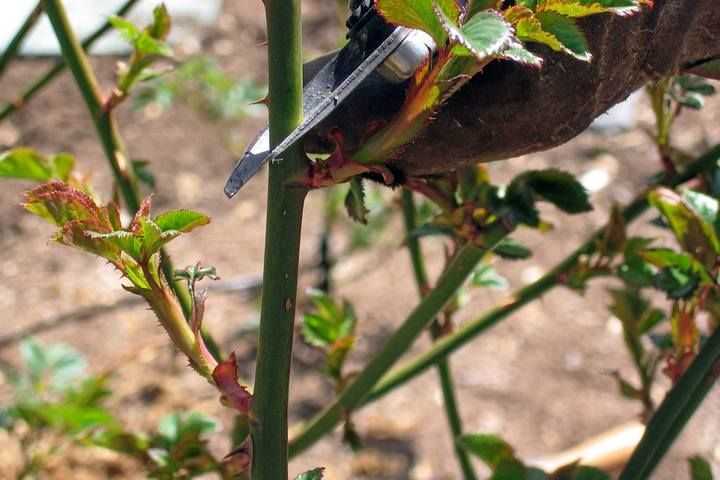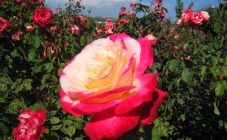Content:
Even despite the fact that roses are demanding and capricious, they have been very popular among flower growers for several hundred years. This beautiful plant is not for nothing called "the queen of flowers" - it is used to make bouquets for various celebrations, it is grown for beauty in personal plots, and landscape designers planted in different compositions.
For several hundred years, breeders have been working on removing roses from ordinary rose hips. Such experiments have resulted in many different varieties that differ in their shapes, sizes and aromas. Special attention should be paid to the variability of the color - in the color palette of rosebuds you can see blue, green and even black.
Do purple roses exist in nature?
Purple roses are often referred to as cyan or lilac, depending on what level of color they are. The group is conditional and reducible in terms of color. There is no such purple color in nature, and all existing varieties are the result of selection.
Florists believe that the purple color of the rose was due to the introduction of the pansy gene. The breeders did not manage to get a pure purple color, and those varieties that exist today have a characteristic lilac shade. It is worth noting that most of these plants change color depending on what stage of flowering the rose is at. Lighting and the intensity of sunlight play a significant role.
Among the most famous varieties that are included in the conditional group "purple roses" are:
- roses Triumph and Purple Triumph;
- ground cover rose Purple Rain;
- Deep Purple;
- Purple Lodge;
- Purple Splash;
- Purple Haze.
Thanks to such colors and various characteristics of the varieties, it became possible to embody the wildest fantasies of landscape designers who are engaged in the design of gardens or flower beds. Purple is very much appreciated in floristry.
The most interesting varieties of purple roses
Despite the fact that it is not the easiest and quickest task to breed a new rose variety, a new variety of decorative flower appears almost every day. It will take a long time to study all the varieties that exist, so before starting to grow a purple rose, it is best to familiarize yourself with the popular and most common varieties. Their description will be below.
Rose Purple Splash
Rose bushes of this variety are distinguished by their density and low height, as well as the correct crown (the plant must be cut off regularly).
In height, the rose Pearl Splash can reach 1 m, the branches are straight, and the foliage is dark green. On one shoot, in most cases, no more than 4 buds are formed.Pearl Splash inflorescences are small in size, but due to the abundant and prolonged flowering, the plant looks very impressive.
As for the semi-double and large petals of the Pearl Splash rose, their shade is mainly light lilac. Representatives of this variety have a strong aroma, as well as an average indicator of frost resistance and immunity.
Rose Dipperle (Deep Purple)
It is one of the oldest varieties. The height of the bush is up to 2 m. The shoots of the plant are unbending and straight, while large flowers have a voluminous and double structure, a dark shade.
The white center effectively emphasizes the dark purple hue of the rose petals. The culture can be distinguished by the presence of both single flowers and inflorescences consisting of three or more flowers.
Deep Purple is a rose that blooms only 1 time during the season, but its flowering is quite long. The aroma of a flower culture can be harsh and specific. But it is worth noting that the plant has high immunity, which allows it to resist many diseases. Also, this variety can boast of good frost resistance.
Rose PurpleLodge (Purple Lodge)
The variety is represented by semi-double, medium-sized flowers that form lush inflorescences.
The flowers are distinguished by a weak and delicate aroma. Cup-shaped flowers (more than 40 petals), reminiscent of old roses up to 10 cm in diameter, bloom in small groups.
The height of the bush is 1.5 m, the variety has good disease resistance, as well as frost resistance and moisture tolerance.
Rose Purple Haze
This variety is represented by low, branched and strong bushes that can reach 0.8-1.5 m in height.
The foliage is long and light, the branches are dense and covered with thorny thorns. The rose inflorescences are of medium size and terry. As for the shade, it is red-violet with yellow stamens.
The plant has a strong aroma. Flowers are single or collected in inflorescences, consisting of 3-5 buds.
Rose Flower Hayes blooms 2-3 times throughout the season, but abundant flowering is characteristic only for the first time.
In some sources, the Latin name is translated somewhat differently and they write the name of the rose Purpl Hayes.
Rose Purple Tiger (Purple Tiger)
The height of this plant variety is 1.5 m, and the spreading bushes have large and long foliage. During the flowering period, large inflorescences of huge buds are formed on the branches, which reach up to 10 cm in diameter. The flowers have a rounded shape and a light lilac shade, as well as a dense double structure.
A characteristic feature of the variety is its color variation. It is impossible to see the same color on one bush, as it changes depending on weather conditions, the general condition of the plant, as well as the level of humidity.
The rose can bloom several times per season, with medium intensity. The culture has good immunity to diseases, it is resistant to excessive precipitation and frost.
Growing and caring for a rose
A rose with a purple hue of buds is a very finicky and capricious flower. If the conditions for its growth are inappropriate, then the culture will not bloom. In order for the flowering of purple roses to be plentiful and the aroma to be rich, you need to make a lot of effort.
The soil in the area where it is planned to plant seedlings should be rich in nutrients, loose and fertile. Also, the earth should have an average acidity. If at least one of these requirements is not met, you need to resort to the following actions:
- pre-loosen heavy soil, then add humus, sand and peat;
- it is recommended to add a little clay to too light soil;
- for acidic soil, it must be treated with slaked lime or chalk until the pH levels out.
It is best to plant seedlings in areas with good lighting, but it is worth remembering that excessive direct sunlight can contribute to the fact that the color of the buds will gradually "fade". Despite the fact that the rose is a light-loving plant, the best option for planting it is where there is a lot of light at the beginning of the day, and a little shade appears in the afternoon.
Bushes need regular watering, but you should not allow moisture to stagnate at the roots. As for the step-by-step landing scheme, it looks like this:
- It is recommended to plant a rose in mid-autumn, best of all in the second half of October. The exception is seedlings that have been obtained as a result of cuttings, they must be planted in early spring.
- It is necessary to dig out planting holes, the depth of which should be sufficient for the root system of the plant to fit freely in them.
- Loosen the bottom, then plant the seedlings, straighten the root system and sprinkle with soil. It is imperative to ensure that the grafting site is completely hidden by the earth. The final step is to trample the soil well.
If a spring planting is planned, compost must be placed at the bottom of the planting hole under the soil layer. The land around the dug-in plants must be mulched and hilled.
It is necessary to water the purple rose quite often (if the weather is dry, then 2-3 times a day), but in small quantities so that the water has time to leave the ground.
For pruning, dead shoots should be removed after winter. The branches that grow inside the bush can be removed in order to shape it. In early September, you should cut off the buds that have already bloomed, as well as very long and old shoots. Before the winter cold sets in, it is necessary to trim the bushes according to the shelter level.
Purple roses must be periodically freed from weeds. If the procedure of frequent weeding is rather problematic, experienced flower growers recommend laying mulch, decorative pebbles or tree bark around the bushes.
Today there are many varieties of purple roses, which will easily become a decoration of the garden and its "highlight". This plant is best combined with pink, white or yellow flowers, but can be planted with other shades if desired.

